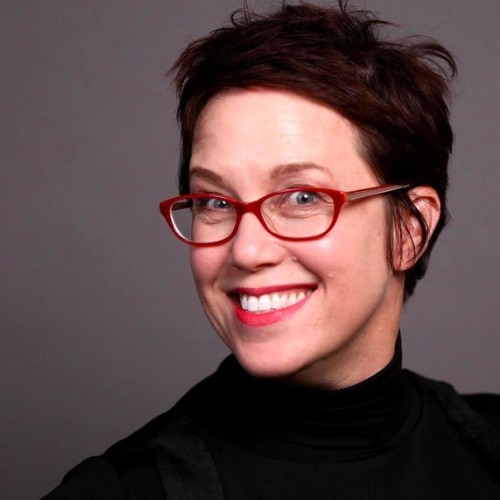Communicating your impact and clarifying your leadership capabilities isn’t an easy task. I often find people need the most support with these three scenarios:
- Senior to Lead: Senior practitioners wanting to step up into Lead level roles
- Hands-on leaders: Leaders who aren't sure how to communicate their impact or approach as a leader
- Leaders consulting as Leads: Hands-on Leaders who are looking for contracting or consulting work and aren't sure how to clarify their skills as a Lead practitioner
Different types of leadership
Understanding the types of leadership is essential to help you best define your expertise and elevate your impact in your profile.
Lead vs. Leader
A Lead is a practitioner working hands-on, often leading their remit on projects, usually self-managing workflow.
A Leader focuses on directing, empowering and supporting others to achieve strategic goals.
Formal vs. Informal Leadership
If you aspire to be a people leader, your journey might begin with informal leadership like mentoring and supporting more junior practitioners, before moving into a formal leadership role with direct reports.
Areas of Influence
Leadership isn't confined to people management. Consider other focus areas like craft, strategy and vision; or leading projects with scoping, planning and client or stakeholder management; or leading initiatives relating to improving systems and processes, defining best-practice as examples. Each area allows for significant contributions without managing a team directly.
Scope and Scale
As you build capability in the leadership realm, consider the size—for example, are you leading your skill set on a cross-functional team, a project or program of work, a chapter, a design team, a division or a studio?
Showing scale, particularly growth, can also be a great way to elevate your leadership capability—for example, increasing headcount or revenue, building capability, embedding a new design practice, or improving workflow.
Highlighting Your Leadership Expertise
Effectively showcasing your leadership capabilities and impact can look different depending on your level and, ultimately, what you are looking to do next in your career. Below I’ve included some tips for each of the 3 areas that people tend to need support with.
Moving from Seniors to Lead
My top three tips to help you transition from a senior into a lead-level role are:
- 1. Shift your focus: Highlight HOW you worked within an organisation, not just the projects or products you delivered. Conduct a profile audit to ensure you're mentioning the moments you've stepped up
- 2. Incorporate your leadership skills: Be sure to mention your growing leadership skills. Weave these into your career story, resume, LinkedIn profile, and how you talk about yourself.
- 3. Provide context in your case studies: Including your role, mentioning what you led on projects, and sharing insights to the team you worked with is a great way to show growing leadership capability.
Hands-On Leaders
For those already in leadership roles, ensure your profile reflects your expertise by covering the following 5 areas:
- 1. Showcase the ways you worked within the organisation
- 2. Highlight the areas of influence
- 3. Clarify your hands-on skills
- 4. Provide insights into the projects, products, or services you have delivered
- 5. Overview your leadership and impact within the organisation, area of focus or business stream.
Expanding this last point further, my top three tips to help you to showcase your leadership skills and impact are:
- 1. Leadership as a case study:
Overview your leadership experience and celebrate your success as a leader, not just your project success. Provide insights into your approach or leadership philosophy and how you work with the team to deliver projects. - 2. Clarify your role in case studies:
Clearly state your role and the artefacts you produced, versus the work you oversaw, that the team delivered. This provides an at-a-glance summary of what you jumped into hands-on and what you directed. - 3. Utilise visual tools:
Use familiar visual tools like customer journey maps, user flows, and project lifecycles to highlight your focus areas, where you worked hands-on, where you oversaw the team, and where you handed over to another team.
Contracting Pivot for Hands-On Leaders
Given the current market, a number of design leaders are pivoting into interim contracting roles while searching for longer-term roles. To successfully gain inroads for consulting work, which tends to require hands-on practitioner skills, I recommend two versions of your profile presentation:
- 1. Long-term & leadership focus: Highlight leadership skills and career trajectory.
- 2. Contracting Focus: Emphasising individual contributor skills on projects.
For contracting roles, clarify your hands-on capabilities, list the programs you use, and the artefacts you created and delivered. This is especially crucial if you have a leadership title, as it helps potential clients understand your practitioner capabilities.
In conclusion
Leadership encompasses a broad spectrum of roles and skills beyond people management. By understanding and sharing context around your experience, it allows you to showcase your unique leadership capabilities and elevate your impact—all of which can support your career progression.
If you are working in Human-centred Design and need support in communicating your Leadership expertise, feel free to contact me. I'm more than happy to organise a time to chat further and help with some recommendations on how you can help showcase your impact and elevate your leadership experience.
Latest.

How Creative Ops Leaders are driving value in 2025 and beyond
Industry Trends, Leadership

Accessibility as a Design Principle: Lessons from Telstra’s Digital Design Team
Thought Leadership, Design, Leadership, Digital Accessibility

Breaking age barriers: Why we must rethink work, age, and progress
Hiring Insights, Thought Leadership








